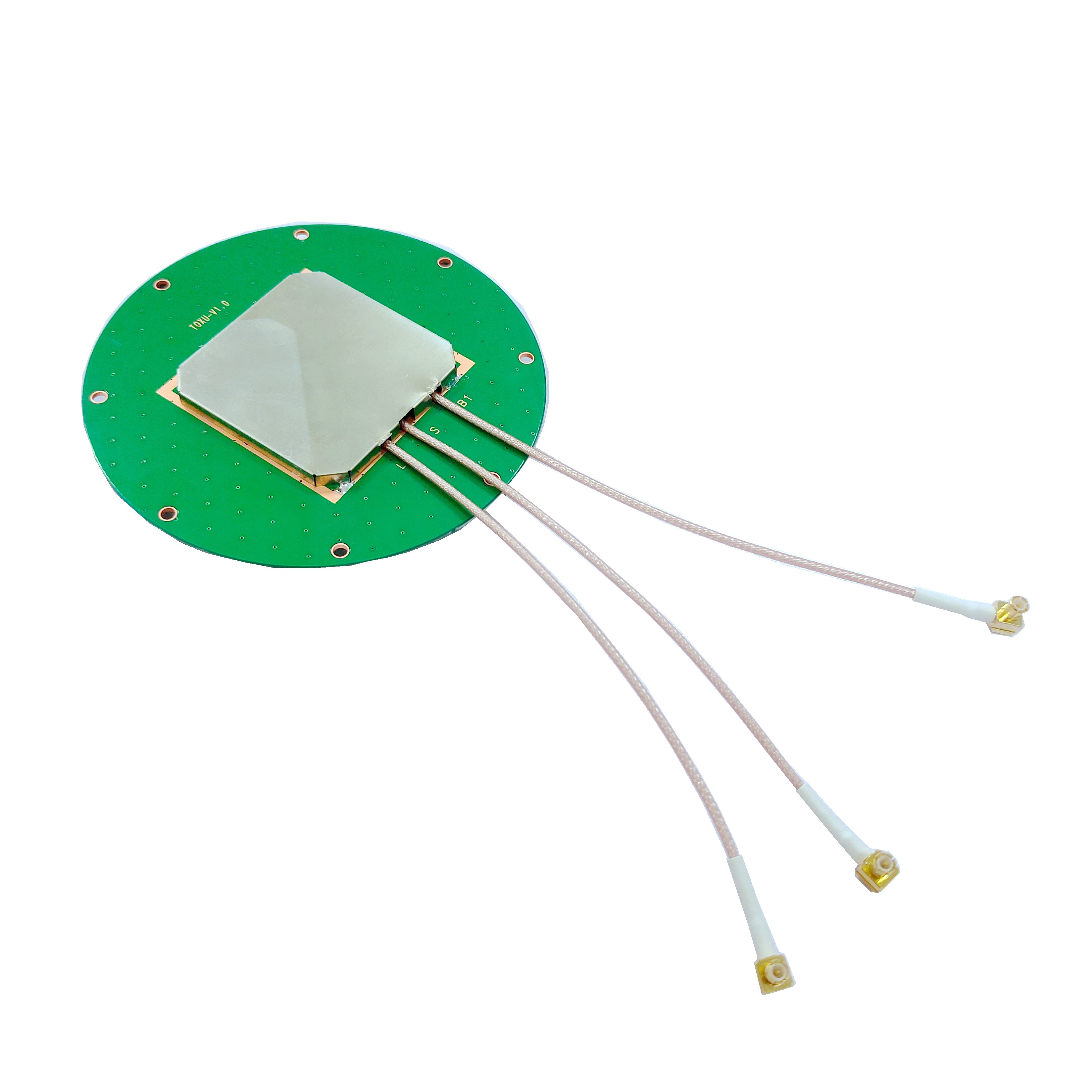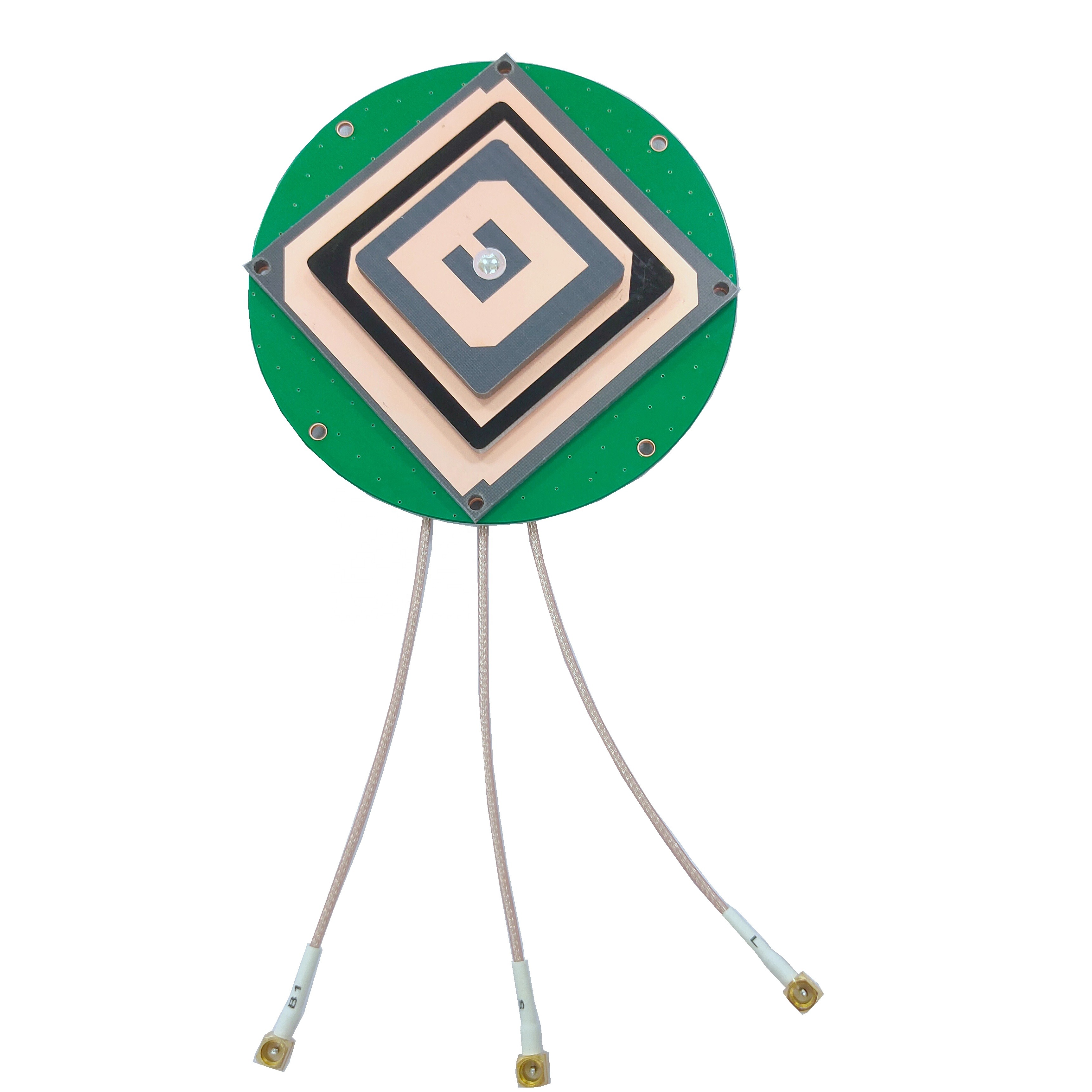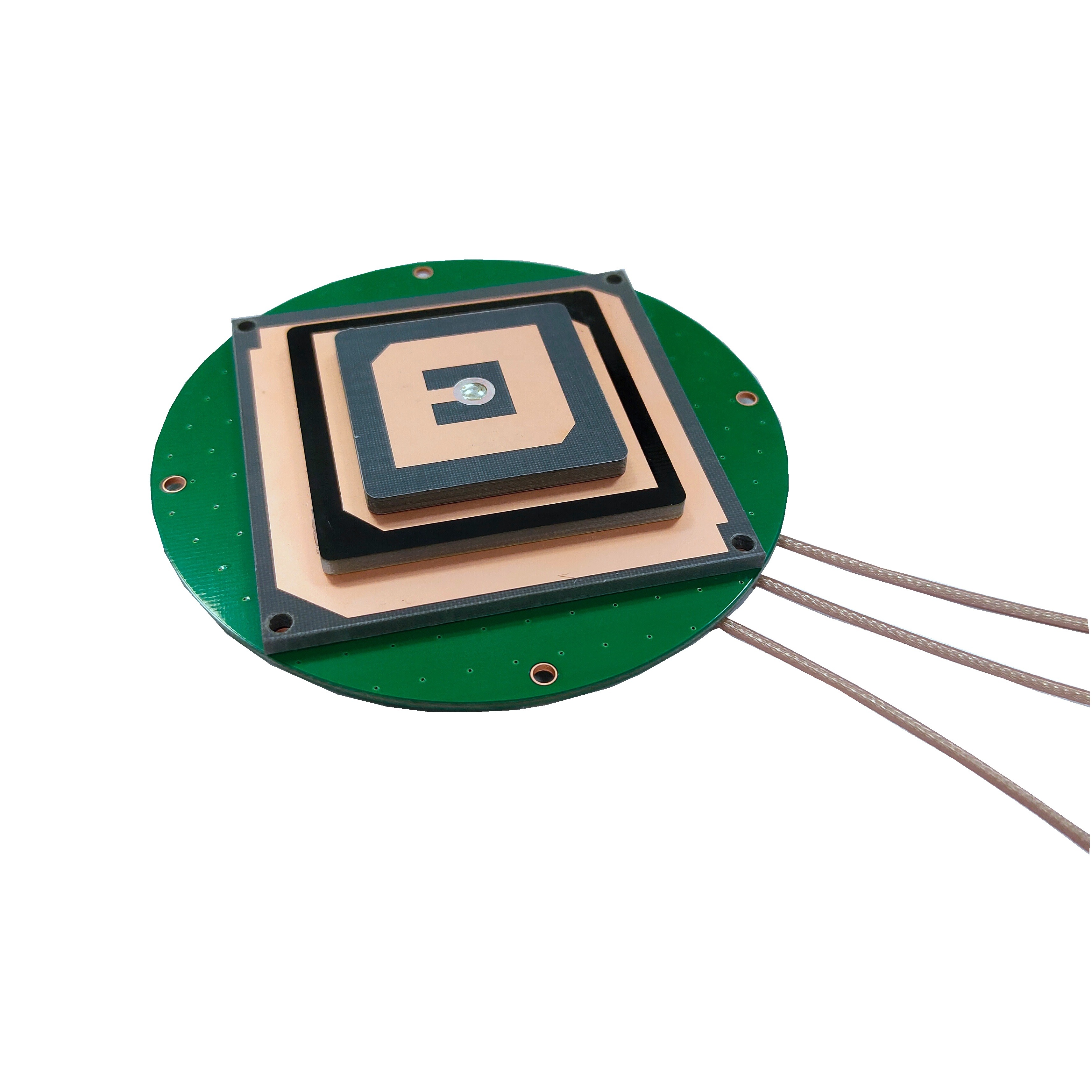5.1 Applications
5.1.1 Geodetic Surveying
As mentioned earlier, geodetic surveying is one of the key applications of high - precision surveying GNSS antennas. Geodetic surveyors use these antennas to measure the precise positions of points on the Earth's surface. This information is used for various purposes, such as mapping the Earth's surface, monitoring tectonic plate movements, and establishing reference frameworks for other surveying and mapping activities. High - precision GNSS antennas can detect changes in the Earth's crustal movements at a very small scale, which is crucial for understanding earthquake hazards and for long - term geodetic studies.
5.1.2 Construction
In the construction industry, high - precision surveying GNSS antennas are used for a wide range of tasks. They are used for site layout, where surveyors use the antennas to mark the exact location of building foundations, roads, and other structures. During the construction process, GNSS - equipped machinery, such as bulldozers and excavators, can use the high - precision positioning data from the antennas to accurately grade the land and place construction materials. In addition, high - precision GNSS antennas are used for monitoring the deformation of buildings and structures during and after construction to ensure their structural integrity.
5.1.3 Precision Agriculture
Precision agriculture has seen a significant increase in the use of high - precision surveying GNSS antennas. Farmers use these antennas to precisely control the application of fertilizers, pesticides, and water. By knowing the exact location of different areas in the field, they can adjust the amount of inputs based on the specific needs of the crops. For example, if a particular area of the field has poor soil fertility, the farmer can use a GNSS - equipped tractor to apply more fertilizer in that area. GNSS - equipped drones are also used in precision agriculture for crop monitoring and spraying, and the high - precision antennas on these drones ensure accurate positioning for targeted spraying.
5.1.4 Aerospace and Aviation
In the aerospace and aviation industries, high - precision surveying GNSS antennas are used for various applications. In aircraft navigation, these antennas provide accurate positioning information, which is crucial for safe takeoff, landing, and in - flight navigation. In satellite - based augmentation systems (SBAS), high - precision GNSS antennas are used to receive and process signals from geostationary satellites that provide additional corrections to the GNSS signals, improving the accuracy of aircraft navigation. In the aerospace industry, high - precision GNSS antennas are also used for satellite tracking and for the precise positioning of spacecraft during orbital maneuvers.
5.2 Future Trends
5.2.1 Integration with Other Technologies
In the future, high - precision surveying GNSS antennas are likely to be integrated with other technologies to provide even more accurate and comprehensive positioning solutions. For example, they may be integrated with inertial navigation systems (INS), which use accelerometers and gyroscopes to measure the motion of an object. By combining GNSS and INS, the system can provide continuous positioning information even when the GNSS signal is temporarily blocked. Another area of integration is with computer vision technology. Cameras can be used in conjunction with GNSS antennas to provide visual context to the positioning data, enabling more accurate mapping and navigation in complex environments.
5.2.2 Miniaturization and Cost Reduction
There is a growing trend towards miniaturization of high - precision surveying GNSS antennas. As technology advances, it is becoming possible to pack more functionality into smaller antenna designs. This miniaturization not only makes the antennas more portable but also reduces their cost. With the use of advanced materials and manufacturing techniques, such as 3D printing, it is expected that the cost of high - precision GNSS antennas will continue to decrease, making
them more accessible to small - scale users, such as individual farmers or small construction companies. For example, miniaturized high - precision GNSS antennas can be easily integrated into small drones used for agricultural monitoring, allowing small - scale farmers to access high - precision positioning data at a lower cost. This will further expand the application scope of high - precision surveying GNSS antennas.
5.2.3 Enhanced Anti - Interference Capabilities
As electromagnetic environments become increasingly complex, enhancing the anti - interference capabilities of high - precision surveying GNSS antennas will be a key future trend. Researchers and engineers are exploring new technologies and methods to improve the antenna's ability to resist various types of interference. One promising approach is the use of adaptive antenna arrays. An adaptive antenna array consists of multiple radiating elements and a signal processing system that can adjust the antenna's radiation pattern in real - time. By detecting the direction of interference signals, the array can suppress the interference by reducing the gain in the direction of the interference source while maintaining high gain in the direction of the GNSS satellites.
Another area of research is the development of new materials with better electromagnetic shielding properties. These materials can be used in the antenna's enclosure to block external electromagnetic interference. Additionally, advanced signal processing algorithms, such as machine learning - based interference detection and mitigation algorithms, are being developed. These algorithms can learn the characteristics of different types of interference signals and automatically adjust the processing parameters to suppress the interference, ensuring the stability and accuracy of the GNSS signals.
5.2.4 Higher Bandwidth and Multi - Frequency Support
With the continuous development of GNSS technology, more and more frequency bands are being used by different GNSS constellations. For example, Galileo uses frequency bands such as E1, E5a, E5b, and E6, while BeiDou has B1, B2, B3, and other frequency bands. In the future, high - precision surveying GNSS antennas will need to support a wider range of frequency bands to be compatible with all major GNSS constellations and their new signal types.
Higher bandwidth antennas will also enable the simultaneous reception of multiple signals from different frequency bands, which can improve the accuracy and reliability of positioning. For instance, receiving signals from both L1 and L5 frequency bands can help correct for ionospheric delays, which is a major source of positioning error. By supporting more frequency bands, high - precision GNSS antennas can take advantage of the complementary information provided by different signals, leading to more accurate and robust positioning solutions.
High - precision surveying GNSS antennas have emerged as a cornerstone technology in modern surveying and related fields, transforming the way we measure, map, and monitor the Earth's surface and man - made structures. Throughout this analysis, we have explored the various aspects of these antennas, from their overview and design to their working principles, advantages, challenges, applications, and future trends. The insights gained from this exploration highlight the critical role that high - precision surveying GNSS antennas play in driving innovation and improving efficiency across multiple industries.
In terms of their overview, high - precision surveying GNSS antennas have addressed the limitations of traditional surveying methods by providing unprecedented accuracy, global coverage, and real - time data acquisition. The importance of these antennas in geodetic surveying, construction, precision agriculture, and aerospace and aviation cannot be overstated. They have enabled tasks that were once considered difficult or impossible, such as detecting minute tectonic plate movements for earthquake monitoring, ensuring millimeter - level precision in large - scale construction projects, optimizing resource use in agriculture, and enhancing the safety and efficiency of aircraft navigation. The growing market for these antennas, driven by increasing demand for accuracy, the expansion of GNSS constellations, and advancements in antenna design technologies, further underscores their significance in today's technological landscape.
The design and construction of high - precision surveying GNSS antennas are a testament to the complexity and sophistication of modern engineering. The careful selection of radiating elements, such as ceramic patch antennas and helical antennas, along with the design of ground planes (including choke ring designs), RF front - ends with high - performance LNAs and filters, and durable enclosures, all contribute to the optimal performance of these antennas. Each component is designed to address specific challenges, such as improving circular polarization, reducing multipath interference, amplifying weak signals without adding excessive noise, and protecting the antenna from harsh environmental conditions. The integration of these components ensures that high - precision GNSS antennas can deliver the accuracy and reliability required for critical applications.
The working principles of high - precision surveying GNSS antennas, based on the reception and processing of GNSS satellite signals, are rooted in fundamental concepts of time - of - flight measurement and trilateration. The addition of carrier - phase measurement and multi - constellation operation has further enhanced the accuracy and availability of these antennas. By measuring the phase of the carrier wave, these antennas can achieve centimeter - to - millimeter level accuracy, while multi - constellation support ensures that they can receive signals from a large number of satellites, even in challenging environments such as urban canyons or dense forests. This combination of advanced measurement techniques and multi - constellation compatibility makes high - precision GNSS antennas highly versatile and reliable.
While high - precision surveying GNSS antennas offer numerous advantages, including high accuracy, wide coverage, real - time data, and reduced labor and time, they also face several challenges. Multipath interference, signal blockage, cost, and electromagnetic interference are among the key obstacles that need to be addressed. However, ongoing research and development efforts have led to the implementation of effective mitigation strategies, such as choke ring designs, adaptive antenna arrays, integration with other technologies like INS and computer vision, and the development of advanced signal processing algorithms. These solutions have significantly improved the performance and robustness of high - precision GNSS antennas, making them more resilient to the challenges they face.
The applications of high - precision surveying GNSS antennas are diverse and continue to expand. From geodetic surveying, which provides the foundation for our understanding of the Earth's shape and dynamics, to construction, which ensures the safety and integrity of our infrastructure, to precision agriculture, which promotes sustainable and efficient food production, and to aerospace and aviation, which enhances the safety of air travel, these antennas have made a profound impact on multiple sectors. As technology advances, new applications are likely to emerge, further expanding the reach and influence of high - precision surveying GNSS antennas.
Looking ahead, the future of high - precision surveying GNSS antennas is promising, with several key trends poised to shape their development. Integration with other technologies, such as INS and computer vision, will enable more comprehensive and reliable positioning solutions, even in environments where GNSS signals are temporarily blocked. Miniaturization and cost reduction will make these antennas more accessible to a wider range of users, democratizing access to high - precision positioning technology. Enhanced anti - interference capabilities, through the use of adaptive antenna arrays, new shielding materials, and advanced signal processing algorithms, will ensure that these antennas can operate effectively in increasingly complex electromagnetic environments. Finally, higher bandwidth and multi - frequency support will allow high - precision GNSS antennas to keep pace with the evolving GNSS constellations and their new signal types, ensuring long - term compatibility and optimal performance.
In conclusion, high - precision surveying GNSS antennas have revolutionized the field of surveying and have become an indispensable tool in a wide range of industries. Their ability to provide high accuracy, global coverage, and real - time data has transformed the way we approach various tasks, from geodetic mapping to construction and agriculture. Despite the challenges they face, ongoing advancements in design, technology, and signal processing are continuously improving their performance and expanding their application scope. As we look to the future, high - precision surveying GNSS antennas will continue to play a vital role in driving innovation, improving efficiency, and addressing the complex challenges of our modern world. It is clear that these antennas will remain at the forefront of technological development, enabling new possibilities and contributing to the progress of society for years to come.




































































 Language
Language
 En
En Cn
Cn Korean
Korean

 Home >
Home > 







 18665803017 (Macro)
18665803017 (Macro)













